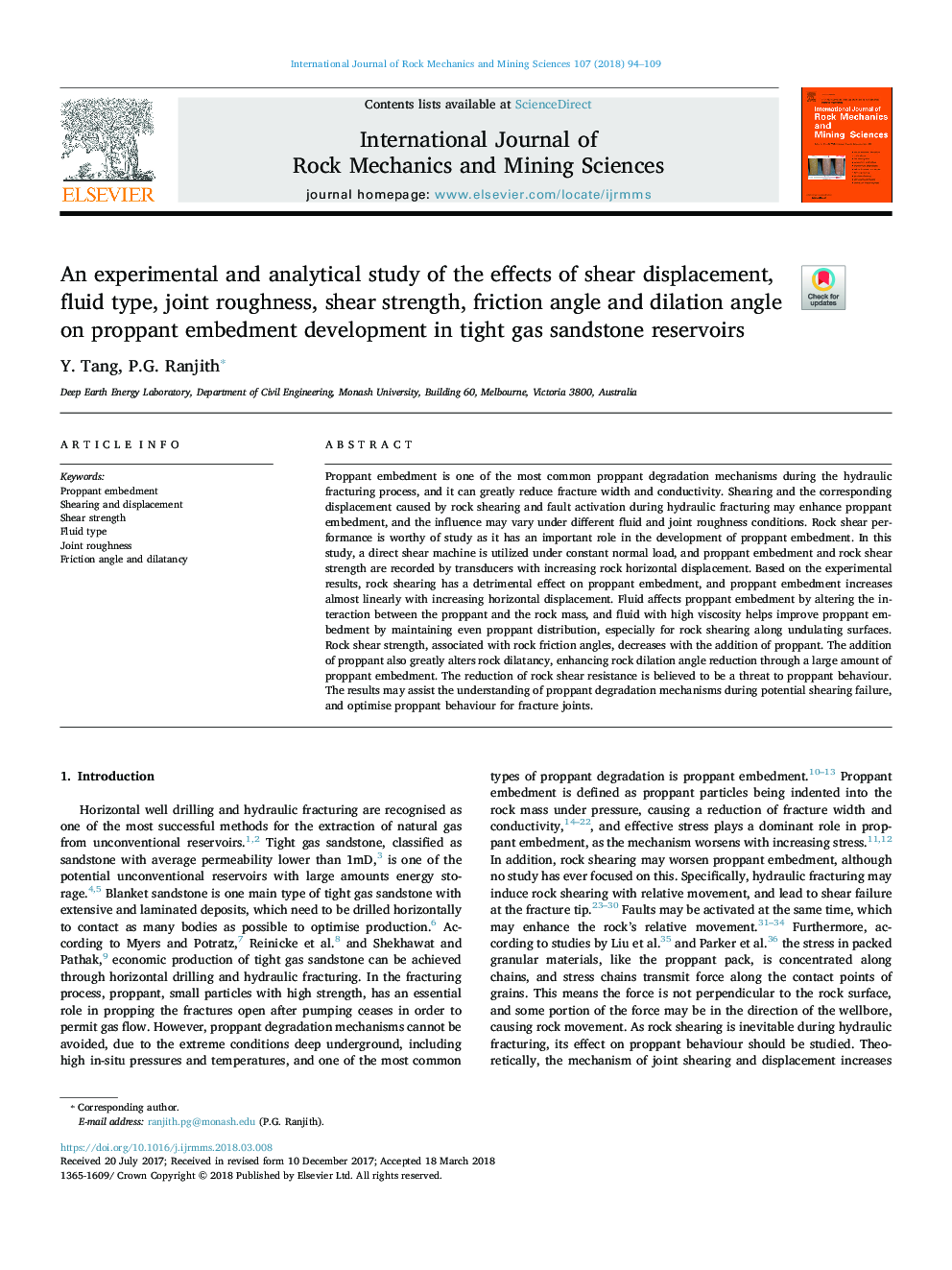| کد مقاله | کد نشریه | سال انتشار | مقاله انگلیسی | نسخه تمام متن |
|---|---|---|---|---|
| 7206137 | 1468662 | 2018 | 16 صفحه PDF | دانلود رایگان |
عنوان انگلیسی مقاله ISI
An experimental and analytical study of the effects of shear displacement, fluid type, joint roughness, shear strength, friction angle and dilation angle on proppant embedment development in tight gas sandstone reservoirs
ترجمه فارسی عنوان
یک مطالعه تجربی و تحلیلی در مورد اثرات جابجایی برشی، نوع سیال، زبری انسجام، مقاومت برشی، زاویه اصطکاک و زاویه انعطاف در توسعه انقباض پروپانتن در مخازن ماسه سنگی ضعیف
دانلود مقاله + سفارش ترجمه
دانلود مقاله ISI انگلیسی
رایگان برای ایرانیان
کلمات کلیدی
تعویض پروپاننت، برش و جابجایی، مقاومت برشی، نوع مایع، زبری مشترک زاویه اصطکاک و انعطاف پذیری،
موضوعات مرتبط
مهندسی و علوم پایه
علوم زمین و سیارات
مهندسی ژئوتکنیک و زمین شناسی مهندسی
چکیده انگلیسی
Proppant embedment is one of the most common proppant degradation mechanisms during the hydraulic fracturing process, and it can greatly reduce fracture width and conductivity. Shearing and the corresponding displacement caused by rock shearing and fault activation during hydraulic fracturing may enhance proppant embedment, and the influence may vary under different fluid and joint roughness conditions. Rock shear performance is worthy of study as it has an important role in the development of proppant embedment. In this study, a direct shear machine is utilized under constant normal load, and proppant embedment and rock shear strength are recorded by transducers with increasing rock horizontal displacement. Based on the experimental results, rock shearing has a detrimental effect on proppant embedment, and proppant embedment increases almost linearly with increasing horizontal displacement. Fluid affects proppant embedment by altering the interaction between the proppant and the rock mass, and fluid with high viscosity helps improve proppant embedment by maintaining even proppant distribution, especially for rock shearing along undulating surfaces. Rock shear strength, associated with rock friction angles, decreases with the addition of proppant. The addition of proppant also greatly alters rock dilatancy, enhancing rock dilation angle reduction through a large amount of proppant embedment. The reduction of rock shear resistance is believed to be a threat to proppant behaviour. The results may assist the understanding of proppant degradation mechanisms during potential shearing failure, and optimise proppant behaviour for fracture joints.
ناشر
Database: Elsevier - ScienceDirect (ساینس دایرکت)
Journal: International Journal of Rock Mechanics and Mining Sciences - Volume 107, July 2018, Pages 94-109
Journal: International Journal of Rock Mechanics and Mining Sciences - Volume 107, July 2018, Pages 94-109
نویسندگان
Y. Tang, P.G. Ranjith,
